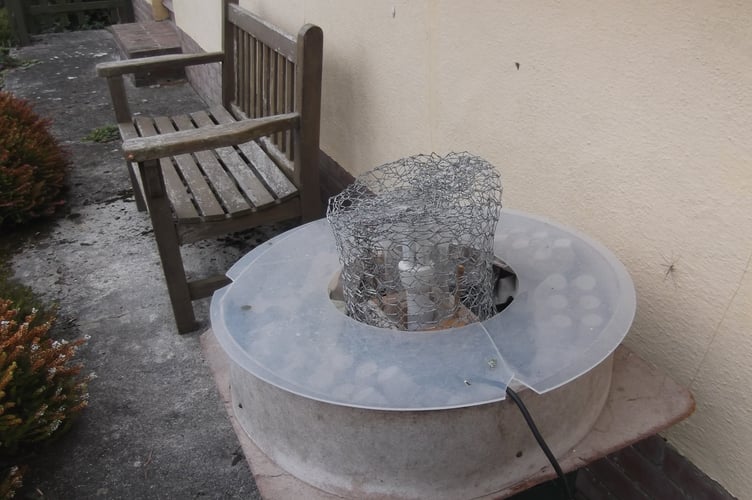From trees and falling leaves, we turn to moths. Most moths live only a few weeks, unless eaten by an echo-locating bat. In those few weeks, they find a mate and lay some eggs near the right leaves or stems on which their caterpillars can feast when they hatch. For every month, there is a season, and recently, when I put on my old moth trap, the next morning I discovered a host of autumn moths sheltering under the empty egg-boxes at the bottom of the trap.
There were several moths of the same species, patterned in shades of orange, yellow and brown and looking like autumn leaves. Frosted Orange is their name. The females will have laid their eggs low down on the stems of thistles, foxgloves, or similar plants. In the spring, the caterpillars hatch and begin nibbling the stems, growing fatter and fatter and finally pupating safely inside the stem. The changes in temperature as September arrives remind them to wake up. They wriggle out of their pupal case, climb the withered stem that was their home and fly up into the starry, autumn skies.

There were thirty moths of eighteen different species resting inside the trap that morning. Another one with a seasonable name was the Autumnal Rustic. This species lays its eggs in the grass or leaf litter. The eggs hatch quite soon and live through the winter as tiny caterpillars. During the night, the caterpillars nibble on any small, low-growing leaves, and in the daytime, they hide under the leaf litter. Through the summer they grow, feeding on their favourite foods, including bedstraw leaves and bluebells. By mid-summer, they are full-up-and-fit-to-bust and pupate in the soil until the autumn, when it is time to start the new generation.

The most beautiful moth in the catch was a Merveille du Jour, and it really is a ‘merveille’ – marvellous – insect. The adult moth feeds on the pollen of the autumn ivy flowers. It lays its eggs in the cracks and crevices of the twigs and bark of oak trees. The delicate but striking patterns of pastel green, black and white provide good camouflage against the lichens that grow on the oak. Like the Frosted Orange eggs, the Merveille du Jour eggs remain dormant through the winter. In the spring, the caterpillars emerge and start feeding on the opening buds and tassels of the flower. As they grow larger, they feed on the green oak leaves and restrict their feeding times to the darkness of night. During the day, they hide in crevices of the rough oak bark, safe from the birds looking for fat caterpillars to feed to their hungry chicks. When fully-grown, the caterpillars crawl down the oak trunk to the ground, bury themselves in the leaf litter and spin a cocoon in which they pupate until autumn whispers, “Wake up!”

Although summer is the best time for most moths, moths are flying in every month of the year. There are July High-flyers, August and September Thorns, March Moths and Spring Ushers. Ahead of us now, and visible against our window panes, if you open the curtains and let the light attract them, are frail, brown November Moths and Winter Moths and chunky, ginger-brown Feathered Thorns. By Christmas, there will be another quite large moth, the December Moth, which is charcoal black with a creamy-white face and a long scribble on its wings, which might say “Happy Christmas” in moth language.
Answers to last week’s quiz:
Clockwise, starting at the top left of the photos.
LEAVES: Sycamore, Beech, Hazel, Hawthorn, Oak and Ash.
FRUITS: Hawthorn, Hazel, Oak, Ash, Beech and Sycamore. Well done!





Comments
This article has no comments yet. Be the first to leave a comment.